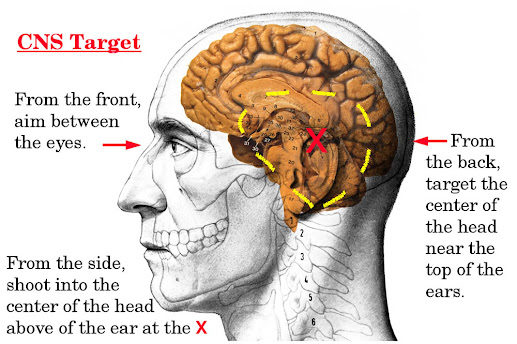Excellent Post from, 'The Patrol Base'
Refreshing and very necessary.
Original, here.
Wednesday, January 27, 2021
Random Thoughts on Military Mobility in the Fourth Generation
First, what is mobility and why is it an important pillar for a Ranger to understand? Mobility in military terms refers to the ability of a weapon system, combat unit or armed force to move toward a military objective.
“As intelligence, surveillance, target acquisition, and reconnaissance capabilities are rapidly developing, mobility becomes even more important. In 2016, Chief of Staff of the United States Army Gen. Mark A. Milley stated that "On the future battlefield, if you stay in one place longer than two or three hours, you will be dead... With enemy drones and sensors constantly on the hunt for targets, there won't even be time for four hours' unbroken sleep"
Mobility has also been defined in terms of three generally recognized levels of warfare: tactical, operational, and strategic. Tactical mobility is the ability to move under fire. Operational mobility is the ability to move men and materiel within the area of operations to the decisive point of battle. Strategic mobility is the ability to move an army to the area of operations.”
Gen. Mark Milley is right, especially with the invention of IED drones. Talk about fucking nightmares.
So, now that we know how the US military defines mobility in the 2nd Generation of warfare, let us look at how mobility affects a soldier in the 4th generation. In 4GW there is no state with their never-ending supply lines to support their fight. It is up to the individual soldier to either supply himself or talk someone into investing in him and his cause.
Always consider how the 4GW team mobilizes and operates. Keep it simple; communicate, assemble, attack and scalp, disperse, disappear; all in half the time it takes for support forces to arrive. Use the CARVER matrix to figure out if targets are worth going operational for. In 2006 in Iraq, insurgents used wave attacks with similar principles to overrun not one, but two Marine Sniper teams. The Marine teams used bad tactics (staying in one spot for too long or using the same FFP (Final firing position) too many times. I was an Army Sniper. It pains me to say that Marines have a better pipeline to becoming a sniper. I have the utmost respect for them and have worked with them for many years of my career. It upsets me to write these lines. The insurgents not only made off with some of the best sniper gear and weapons on the market, but they made off with a Marine sniper too. He was recovered, dead of course. Don’t be that guy.
For the individual soldier, this means you must consider the following key points:
The gear you carry. For the 4GW fighter, this means streamlined for efficiency and concealability, yet with enough firepower to sustain you in a fight long enough to assemble and attack or break contact. Be ready to fight in a minute if a target of opportunity pops up. But remember how to disappear. You must become the sea of people the moment troops show up. Consider where you want your extra mags and pistol. This could be a professional battle belt (I love, High Threat Concealment), a few mags in your back pocket, or pistols only. It most likely won’t be a tactical plate carrier. METT-TC will dictate what equipment you should use. Be the Gray man. Fighting is ugly. Quit trying to be the tacticool operator.
Knowledge of your AO. Intelligence. Local, local, local!! Get off the internet and go have a beer with your neighbors. Find out who they are, what they do, who they voted for, etc. Probe with innocuous questions. Walk your area learn the terrain for rally points, both micro and macro. I will have a post on the ten terrain features you should learn very soon. Five major, (Hill, valley, saddle, ridge, depression) three minor, (cliff, draw, spur) and two supplementary (cut and fill). I do forget how raw many of the readers are. The 1911 Boy Scout manual states:
1. Know every lane, by-path, and short cut for a distance of at least two miles in every direction around the local scouts' headquarters in the country.
2. Have a general knowledge of the district within a five-mile radius of his local headquarters, so as to be able to guide people at any time, by day or night.
3. Know the general direction and population of the five principal neighboring towns and be able to give strangers correct directions how to reach them.
4. Know in the country in the two mile radius, approximately, the number of horses, cattle, sheep, and pigs owned on the five neighboring farms: or in a town must know in a half-mile radius what livery stables, garages and blacksmiths there are.
5. Know the location of the nearest meat markets, bakeries, groceries, and drug stores.
6. Know where the nearest police station, hospital, doctor, fire alarm, fire hydrant, telegraph and telephone offices, and railroad stations are.
7. Know something of the history of the place, its principal public buildings, such as town or city hall, post-office, schools, and churches.
8. As much as possible of the above information should be entered on a map.
Physical training or your ability to get to a decisive point in a timely manner. Overweight people who drive Volvos do not become urban guerillas. You cannot E&E if you cannot move 20 meters without sucking wind. Get in shape. If you have a medical condition, get into better shape than you are currently in. You know you can.
That is it for today. I apologize for the stream of thoughts I diarrheaed onto this post. I have four years of total time as an infantryman fighting overseas in Iraq and Afghanistan. Once I get to putting finger to keyboard it is hard to organize in a timely manner. Work on those ideas to become a more mobile combat force. If you have any questions ask in the comments and I will answer them. Stay hard, Raptor 2, out.







I appreciate your bald truthfulness. I especially respect the use of the Boy Scout manual. The ('70's vintage) BSA handbook was my first deep intro to living out of doors. I loved and still love being in the wilderness.
ReplyDelete